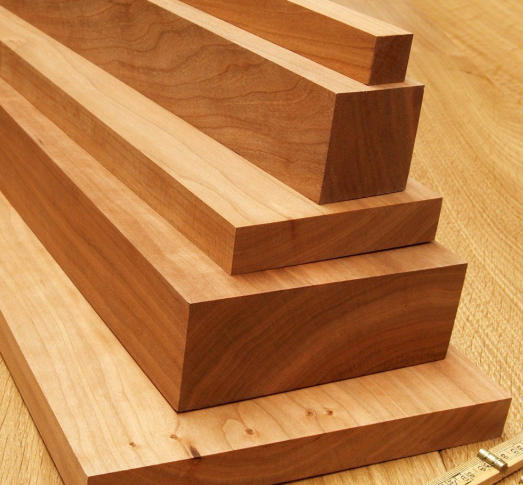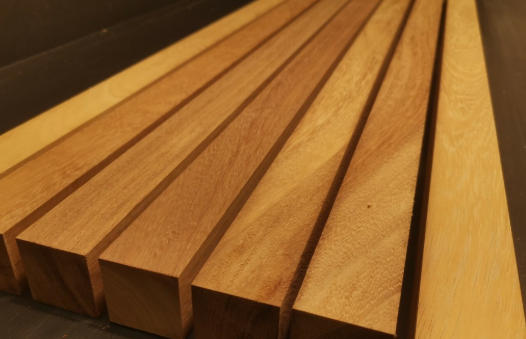Views: 222 Author: Rebecca Publish Time: 2025-10-23 Origin: Site











Content Menu
● The Origin and Botanical Profile
● Physical and Mechanical Properties
● Workability and Machining Behavior
>> Construction and Architecture
>> Furniture and Interior Design
● Environmental and Sustainability Factors
● Maintenance and Finishing Recommendations
>> Frequently Asked Questions (FAQs)
>> 1. What is Iroko wood commonly used for?
>> 2. How does Iroko compare to teak?
>> 3. Does Iroko require maintenance?
>> 4. What are the environmental concerns with Iroko?
>> 5. Can Iroko be used outdoors without treatment?
Iroko wood is one of Africa's most distinguished hardwoods, widely recognized for its durability, golden-brown color, and versatility. Commonly referred to as Ìrókò in Yoruba, this species hails from the Milicia genus, primarily Milicia excelsa and Milicia regia. Because of its close similarity to teak, it's often marketed as “African Teak,” even though the two are botanically unrelated. Known for its impressive weather resistance and long-lasting nature, Iroko has become an internationally popular material across industries ranging from architecture to shipbuilding.[3][5][11]

Iroko trees are native to tropical West and East Africa. They commonly grow in countries such as Nigeria, Ghana, Ivory Coast, and Tanzania. Mature trees can reach heights of over 45 meters (150 feet) with trunk diameters of up to 1.8 meters (6 feet), making them one of the continent's most valuable timber sources. These trees live for over 500 years and thrive in high humidity regions. The wood is harvested from the heartwood of the tree, known for its distinctive golden-brown coloration and extraordinary strength.[1][9]
- Scientific name: *Milicia excelsa*, *Milicia regia*
- Common names: Iroko wood, African teak, Kambala, Odum, Tule, Moreira
- Family: Moraceae
- Geographic range: Central and West Africa
Freshly cut Iroko wood appears yellowish-brown but darkens over time into a rich golden or deep brown color. The sapwood is narrow and pale, sharply demarcated from the heartwood. Its interlocked grain gives it a beautiful ribbon-like texture, and when quarter-sawn, it produces an attractive striped or mottled pattern. The texture is medium to coarse, with a natural luster that enhances its visual appeal. Over time, its surface oxidizes to a warm patina that resembles genuine teak.[6][1][3]
Iroko wood is classified as a heavy, dense hardwood. Below is a summary of its key mechanical properties:
| Property | Value | Units |
|---|---|---|
| Average Dried Weight | 41.2 | lbs/ft⊃3; (660 kg/m³) k-timbers |
| Janka Hardness | 1,260 | lbf (5,310 N) mcilvain |
| Modulus of Rupture (MOR) | 14,080 | lbf/in⊃2; (97.1 MPa) k-timbers |
| Modulus of Elasticity (MOE) | 1,580,000 | lbf/in⊃2; (10.90 GPa) k-timbers |
| Crushing Strength | 7,750 | lbf/in⊃2; (53.5 MPa) mcilvain+1 |
| Shrinkage (radial/tangential) | 3.3% / 4.8% | — k-timbers |
| Specific Gravity | 0.55–0.66 | — mcilvain |
These figures demonstrate why Iroko is used in applications demanding longevity and load-bearing capacity. It resists scratches and impacts better than many temperate hardwoods, explaining its use in flooring, workbenches, and outdoor structures.[1]
Although Iroko wood is dense, it is easier to work with compared to many tropical hardwoods. However, its interlocked grain might cause slight tearing during planing, and the calcium carbonate deposits (“Iroko stones”) can dull tools. Tungsten-carbide blades are recommended for processing. It glues, nails, and finishes well. The wood's natural oils can sometimes interfere with certain finishes or adhesives, so degreasing the surface with a solvent before coating is recommended.[5][6][1]
- Machinability: Moderate
- Nailing and screwing: Good holding power
- Finishing: Acceptable; may need filler for a perfectly smooth finish
- Odor: Faintly oily; no strong scent
- Steam bending: Moderate success rate
Iroko is graded as “very durable” (Durability Class 1–2 under EN standards). Its natural oils and phenolic compounds give it outstanding resistance to fungi, termites, and marine borers. In outdoor exposure, untreated Iroko can last 60 years or longer. It weathers naturally to a silver-grey tone if left unfinished, making it ideal for cladding and decking applications without frequent maintenance.[8][9]
Iroko contains a compound called chlorophorin, a natural antioxidant that contributes to its excellent decay resistance. However, this compound can sometimes interfere with oil-based finishes, delaying drying times. Nevertheless, these natural chemicals enhance its longevity in exposed environments.[2][6]

The versatility of Iroko wood makes it a preferred material among builders, furniture makers, and marine engineers.
- Exterior cladding: Its golden-brown aesthetic and stability make it ideal for modern facades and architectural siding.
- Doors and window frames: Due to moisture resistance, Iroko performs exceptionally well in humid or coastal climates.
- Flooring: Hard and resilient under heavy foot traffic, with an inviting natural tone.
- Decking and pergolas: Popular for outdoor patios and resorts where weather resistance is essential.[11][12]
Iroko wood's grain and luster make it suitable for:
- Indoor furniture including dining tables, chairs, and bed frames.
- Kitchen fittings and countertops that resist water damage.
- High-end cabinetry for luxury interiors.
Its structural stability prevents warping and splitting, guaranteeing longevity even in fluctuating environments.[13][5]
Iroko's natural oils make it a sought-after timber for marine purposes. It is widely used for:
- Boat decks and shipbuilding components.
- Yacht interiors and cover boards.
- Dockside structures and marine walkways.
In industrial contexts, Iroko is used for molds, machine framing, and heavy-duty workbenches.[5][1]
Although Iroko is not endangered, overharvesting in some regions has led to sustainability concerns. In West African countries, illegal logging threatens forest biodiversity. Fortunately, certified sustainable sources are emerging under FSC (Forest Stewardship Council) schemes. Consumers are urged to purchase only government-regulated or sustainably certified Iroko to ensure zero-deforestation practices.[1]
Maintaining Iroko's appearance and longevity requires straightforward care:
1. Cleaning: Regularly wipe surfaces with a damp cloth to remove dirt and dust.
2. Oiling: Use linseed or tung oil for outdoor furniture; it enhances the color and water resistance.
3. Finishing: For indoor applications, apply a polyurethane coating for long-term protection.
4. Weathering: For exterior projects, Iroko can be left untreated to age naturally to a silver-grey patina.
5. Repairing: Scratches can be lightly sanded and re-oiled without full refinishing.
Its natural resilience reduces maintenance costs compared to many exotic hardwoods.[8]
| Property | Iroko (African Teak) | Teak (Asian Teak) |
|---|---|---|
| Origin | West and East Africa | Southeast Asia |
| Durability | Very durable (Class 1–2) | Extremely durable (Class 1) |
| Density | 660 kg/m³ | 650–720 kg/m³ |
| Oil Content | High | Very high |
| Cost | Lower | Higher |
| Appearance | Golden to deep brown | Light golden with fine grain |
| Maintenance | Low | Moderate (requires oiling) |
This table highlights why builders often select Iroko as a more affordable, sustainable teak alternative with nearly identical performance.[14][5]
Iroko wood, often dubbed “African teak,” stands as a premium hardwood known for its beauty, durability, and environmental resilience. Its rich texture and exceptional resistance to decay make it an excellent choice for both indoor and outdoor projects. From furniture to marine construction, Iroko's versatility offers designers and craftsmen a durable, cost-effective, and sustainable alternative to teak. When sourced responsibly, it remains one of Africa's greatest contributions to the global timber industry.

Iroko wood is used for furniture, flooring, cladding, doors, windows, marine construction, and decking due to its strength, beauty, and weather resistance.[11][5]
While both are durable and water-resistant, Iroko is more affordable and widely available from sustainable sources, making it a practical substitute for traditional teak.[14][5]
Minimal maintenance is needed. Regular cleaning and occasional oiling help retain its sheen and prevent natural weathering from turning it silver-grey.[8]
Overexploitation in parts of Africa poses deforestation risks. Buyers should source FSC-certified lumber to support sustainable forestry practices.[1]
Yes, Iroko's natural oils make it suitable for outdoor use even without chemical treatment, lasting decades under normal conditions.[9][8]
[1](https://k-timbers.com/iroko-wood-properties-characteristics-uses/)
[2](https://www.ohc.net/wp-content/uploads/2020/03/IROKO-1.pdf)
[3](https://www.wood-database.com/iroko/)
[4](https://tropix.cirad.fr/FichiersComplementaires/EN/Africa/IROKO%202023.pdf)
[5](https://www.mcilvain.com/iroko/)
[6](https://www.asalawood.com/product-page/iroko-teak-wood)
[7](https://www.ohc.net/wp-content/uploads/2020/03/Iroko-Technical-Data-.pdf)
[8](https://ecovaclad.co.uk/wp-content/uploads/2022/03/Iroko-Datasheet.pdf)
[9](https://www.anyonewood.com/iroko/)
[10](https://www.woodworkerssource.com/iroko-african-teak/iroko-44-lumber-pack.html)
[11](https://lignawooddesign.com/blog/iroko-wood-uses/)
[12](https://ecochoice.co.uk/why-iroko-wood-for-outdoor-projects/)
[13](https://k-timbers.com/outstanding-uses-of-iroko-wood-in-daily-life/)
[14](https://duffieldtimber.com/the-workbench/buyers-guides/iroko-vs-oak-a-quick-hardwood-guide)